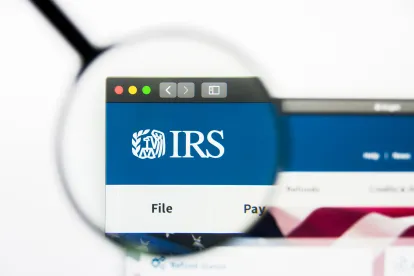The COVID-19 pandemic compelled businesses, organizations and government agencies to shift many processes and procedures online, even if only on a temporary basis. The Internal Revenue Service (IRS) was no exception.
While electronic signature and filing of some returns, such as income tax returns, has been available for years, other returns – notably gift and estate tax returns – had been required to be paper filed with a handwritten ink signature.
In March 2020, in response to the pandemic, the IRS issued interim guidance to expand the application of electronic signatures to certain returns. This policy was subsequently extended through Oct. 31, 2023.
In response to positive feedback that the new policy allowed for greater efficiencies and flexibility to meet filing requirements, the IRS announced in IRS News Release 2023-199, published on Oct. 30, that it has once more extended the electronic signing of certain returns indefinitely, until “more robust technical solutions are deployed.” Internal Revenue Manual (IRM) 10.10.1, IRS Electronic Signature (e-Signature) Program, has been updated with the new guidelines.
The IRS is now accepting both handwritten and electronic signatures on the following select forms for which e-filing is not available (see IRM 10.10.1-2 for a complete list):
- 706 series returns – Estate and Generation-Skipping Transfer Tax Returns
- Form 709 – U.S. Gift (and Generation-Skipping Transfer) Tax Return
- Form 3520 – Annual Return to Report Transactions with Foreign Trusts and Receipt of Foreign Gifts “FBAR”) and Form 3520-A (Annual Return of Foreign Trust with a U.S. Owner)
- Form 4768 – Application for Extension of Time To File a Return and/or Pay U.S. Estate (and Generation-Skipping Transfer) Taxes
- Form 8971 – Information Regarding Beneficiaries Acquiring Property from a Decedent
Although not listed, Form 2848, Power of Attorney and Declaration of Representative, may also be signed electronically.
Depending on the specific IRS form to be signed, the following are acceptable signature alternatives to handwritten signatures:
- Typed name on a signature block
- Scanned or digitized image of a handwritten signature
- Shared secret, such as a code, password or PIN
- A unique biometric-based identifier, such as a fingerprint, voice print or retinal scan
- A handwritten signature input onto an electronic signature pad
- A handwritten signature by means of a stylus device
- A selected checkbox on an electronic device
- A signature created by third-party software
There is no requirement for the use of a particular technology or software platform. To be a legally binding electronic signature, there must be a procedure to confirm the intent of the signer and identify and authenticate the signer, and a means to preserve the integrity of the electronically signed form post-signature.




 />i
/>i

